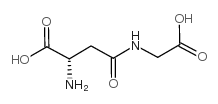[Changes in the microflora of the large intestine in rats administered cephalexin and erythromycin orally].
A V Lapchinskaia, B A Shenderov, O V Chakhava, E M Gorskaia
文献索引:Antibiot. Med. Biotekhnol. 32(3) , 206-10, (1987)
全文:HTML全文
摘要
The effect of long-term use of cephalexin and erythromycin (for 17 days) on large intestine microflora was studied on rats. It was found that intragastric administration of cephalexin in a dose of 800 mg/kg and erythromycin in a dose of 400 mg/kg was followed by changes in the quantitative and qualitative composition of the large intestine aerobic and anaerobic microflora. However, it did not induce production of beta-aspartyl glycine which is a biochemical indicator of deep changes in intestinal microflora. The long-term use of the above antibiotics resulted in increased levels and persistence of intestine colonization with facultative pathogenic enterobacteria and staphylococci resistant to the chemotherapeutic agents.
相关化合物
| 结构式 | 名称/CAS号 | 分子式 | 全部文献 |
|---|---|---|---|
 |
Beta-天冬氨酰甘氨酸
CAS:3790-52-1 |
C6H10N2O5 |
|
'Normalization' of germfree mice after direct and indirect c...
1986-10-01 [Lab. Anim. 20(4) , 286-90, (1986)] |
|
Influence of zinc bacitracin and Bacillus licheniformis on m...
2003-10-01 [Vet. Res. Commun. 27(7) , 513-26, (2003)] |
|
[Rapid diagnosis of dysbacteriosis by detecting beta-asparty...
1985-08-01 [Zh. Mikrobiol. Epidemiol. Immunobiol. (8) , 15-8, (1985)] |
|
Effects of selective oral antimicrobial prophylaxis and syst...
1989-08-01 [APMIS 97(8) , 705-14, (1989)] |
|
Identification of an acidic dipeptide, beta-aspartylglycine,...
1984-11-01 [J. Neurochem. 43(5) , 1375-84, (1984)] |